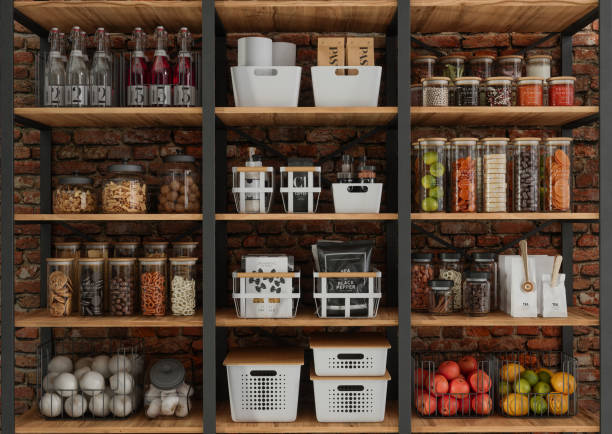Smart Organization Systems for Streamlined Meal Preparation
Efficient kitchen organization reduces decision fatigue and speeds up meal preparation. Systems that group cookware, tableware, utensils, and appliances around common tasks make it easier to follow recipes, manage mealprep, and host guests. Thoughtful storage and maintenance practices also support safety, cleaning, and sustainability while saving space and time.

Efficient kitchen organization turns meal preparation from a chaotic task into a predictable routine. By arranging cookware, utensils, tableware, and appliances according to how you cook, you can shorten prep times, reduce clutter, and maintain safety. Systems that balance accessibility with storage and cleaning needs also support sustainability by helping you use what you have and reduce waste. The following sections explain practical approaches to organizing a kitchen so mealprep flows smoothly for everyday cooking and hosting.
How can cookware and utensils be organized?
Group cookware and utensils by function rather than storing everything together. Keep frequently used pots and pans near the stove and stack lids on a dedicated rack. Use drawer dividers and utensil trays for everyday spoons, spatulas, and tongs so they’re easy to grab during active cooking. Hanging rails or pegboards above prep surfaces can store frequently used tools without taking drawer or counter space. Rotate seasonal or specialty items to higher shelves and label containers so inventory stays visible and maintenance routines are easier to follow.
What tableware and hosting systems improve flow?
Store plates, bowls, and serving pieces by frequency of use and size for quick table settings. Keep everyday tableware on lower shelves or in easy-to-reach cabinets, and place serving platters and specialty items near a staging area used for hosting. Consider stackable or nestable options to conserve space while maintaining accessibility. A dedicated drawer or cart for napkins, placemats, and a basic hosting kit (service for guests, serving utensils) reduces last-minute scrambling and integrates cleaning and safety checks before guests arrive.
How does storage and spacesaving support mealprep?
Flexible storage—clear containers, labeled bins, and adjustable shelving—lets you design zones for grains, snacks, and refrigerated ingredients so recipes are assembled faster. Use slim pull-out shelves in cabinets for spices and oils to avoid digging through clutter. Magnetic strips on a backsplash can hold knives and metal utensils safely while freeing counter space. Spacesaving choices like collapsible colanders, nesting mixing bowls, and compact appliances can shrink footprint without limiting functionality, which helps maintain an efficient workflow during busy mealprep sessions.
Which appliances and maintenance routines help?
Place appliances where they’ll be used: countertop mixers near baking zones, coffee makers near dining areas, and microwaves at convenient heights. Keep appliance cords and outlets organized to avoid hazards and simplify cleaning. Establish simple maintenance routines—wipe-down schedules, descaling, and monthly checks—that extend appliance life and preserve performance. A small toolkit or checklist for basic maintenance helps you identify when professional service is needed versus routine cleaning you can handle safely at home.
How can organization support safety and sustainability?
Safety and sustainability go hand in hand: store heavy items low to avoid lifting injuries, secure sharp tools in drawers or on magnetic strips, and separate cleaning chemicals from foodstuffs to prevent contamination. Plan storage to reduce food waste—FIFO (first in, first out) rotation, clear bins for pantry items, and visible expiration tracking make it easier to use what you buy. Choose durable, repairable utensils and cookware and maintain them with routine cleaning and care to reduce disposable waste and lower long-term costs.
How do recipes and cleaning fit into daily systems?
Integrate recipe planning with storage and cleaning: keep staple ingredients grouped and label them to speed ingredient checks when choosing recipes or planning mealprep. Create a prep station with cutting boards, a dedicated trash or compost bin, and a sink-side drying area to streamline transitions from prep to cooking to cleaning. Post-meal, a short cleaning routine that returns each tool and container to its assigned location makes future mealprep faster and helps maintain organization over time.
In conclusion, designing smart organization systems for the kitchen means aligning storage, appliances, cookware, and tableware around actual cooking habits. Consistent maintenance, clear labeling, and spacesaving solutions reduce friction during recipes and mealprep while improving safety and encouraging sustainable choices. By arranging items for accessibility and creating simple routines for cleaning and maintenance, kitchens become more functional for everyday cooking and hosting without adding complexity.





